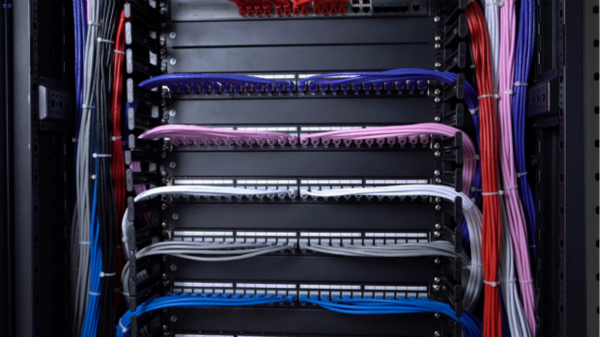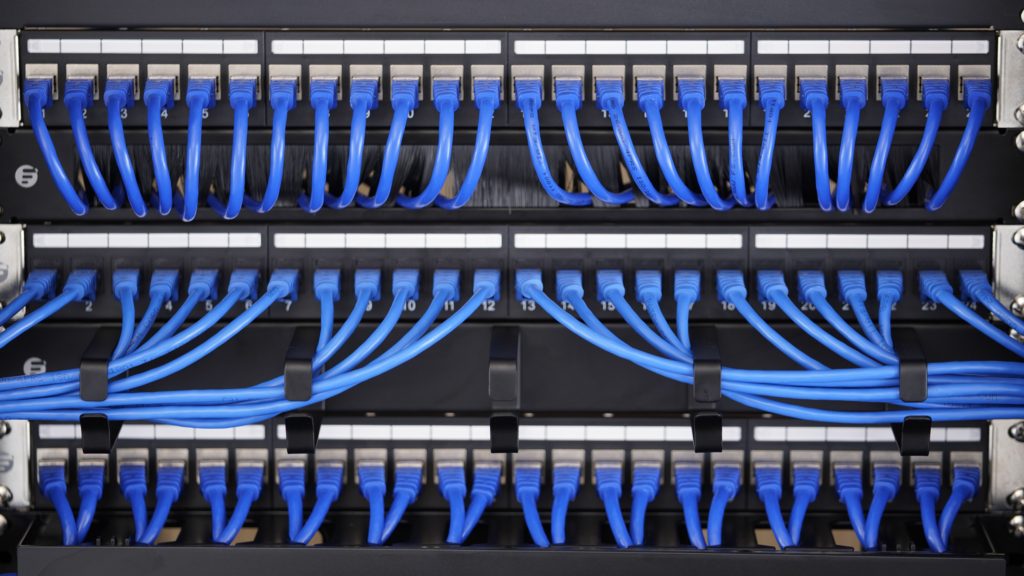As information technology develops, we have to upgrade our network products such as the cables, patch panels, etc. Besides, to reduce our data center’s cost, we are tempted to use the old and new ones to make a mixed connection. For instance, run Cat6a cables on Cat6 patch panel. However, does it work? Is it a reliable connection? Here we’ll discuss it in this article.
Comparison of Cat6 and Cat6a Cabling
Cat6a and Cat6 are both designed for Gigabit Ethernet. They can handle 10BASE-T, 100BASE-TX, 1000BASE-TX, and 10GBASE-T rate. Cat6 and Cat6a sound almost the same, but a single lowercase “a” sets the two terms apart. The word “a” stands for augmented, which makes them behave differently in performance, size and so on.
Cat6 usually has 23 AWG wire conductors, and can support transmission speed of up to 10Gbps at 250MHz. But the theoretical top distance with 10Gbps speed is only 33-35 meters. While Cat6a also has 23 AWG wire conductors, but doubles the capability by delivering data at 500MHz. Moreover, it supports 10Gbps standard over the full 100 meter distance. Note that Cat6a is usually thicker than Cat6 cables, because Cat6a uses extra thick plastic. Therefore, Cat6a takes more space in a patch panel than Cat6.
Can I Use Cat6a Cables on Cat6 Patch Panel?
Ethernet patch panel is the easiest method currently for your networking needs by providing a reliable and neat Cat6 and Cat6a cabling. Usually, we use Cat6 patch panel to connect Cat6 cables, and Cat6a patch panel is for Cat6a cables. However, there isn’t much practical difference between Cat6 and Cat6a patch panel. Then how about installing Cat6a on cat6 patch panel, will it work? There are several things to consider before answering it.
Cat6a is the updated version of Cat6, they share the same RJ45 connectors. Therefore, it’s no doubt that Cat6a cables can be plugged into the Cat6 patch panel.
Cat6a cable’s size is bigger, so the corresponding minimum bend radius is larger, which will change installation requirements for routing and handling as well as design of pathways and spaces. For example, when we install Cat6a on a 48 port Cat6 patch panel, the larger wire may end up bending. So it’s not entirely safe to wire Cat6a on the 48 port patch panel, you have to manage it with much more patience and caution.
Commonly, conductors determine whether the connection works or not. Thus, in this respect, Cat6 patch panel will work with Cat6a cables, since they have the same RJ45 conductors. But from the above we know it’s not safe enough to do so.
Conclusion
To sum up, Cat6a cables are able to run on Cat6 patch panel. However, there are some disadvantages exist in this job. So I’d like to suggest that if you just want to make an experiment at home, it’s surely OK. But if you want to use Cat6 patch panel with Cat6a in your data center, that’s not inappropriate. Because the cables may be out of work, which will cause damages to your business. If you would like to know more about designing or choosing the right cabling infrastructure, please contact us via sales@fs.com.
Related Article: Does Cat6 on Cat5e Patch Panel or Cat5e on Cat6 Patch Panel Work?



